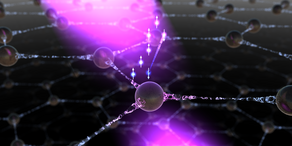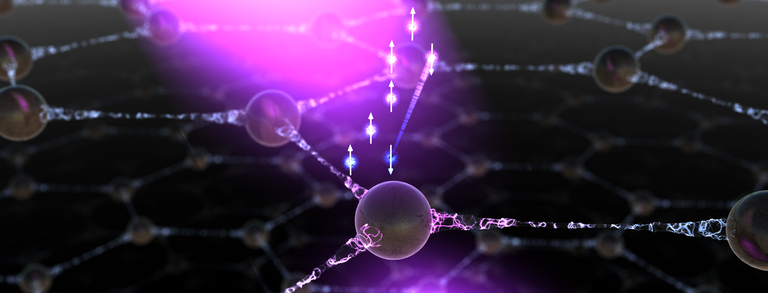Publications
Explore our group’s extensive body of work on our Google Scholar profile, where you’ll find all our peer-reviewed articles, preprints, and citations. Here below you will find the summary of our recent highlights.
Magnetic Order Unlocks Optical Access to Dark Excitons in CrSBr (arXiv, 2025)
In this work, we show that magnetic order in the antiferromagnetic van der Waals semiconductor CrSBr renders a dark exciton optically accessible via exciton–magnon coupling. Broadband femtosecond reflectivity reveals a hidden excitonic resonance at 1.46 eV that is absent in static spectra but emerges through its coherent hybridisation with a GHz magnon. High-photon-energy excitation allows active control of the hybrid dispersion, establishing a route to engineer magnetic hybrid spin–exciton platforms for microwave-to-optical quantum transduction.
Electronic structure and Orbital Hybridization of CrPS4 (arXiv, 2025)
In this work, we present a comprehensive investigation of the layered antiferromagnet CrPS₄ via angle-resolved photoemission spectroscopy (ARPES), complemented by density functional theory (DFT+U). We determine the full valence-band electronic structure, identify the dominant orbital contributions, and show that strong orbital-selective hybridisation between Cr 3d and S 3p states is central to the formation of the magnetic ground state. This hybridisation also relaxes dipole selection rules, providing a microscopic rationale for the otherwise forbidden sub-gap d–d excitations reported in earlier optical studies.
Light-Driven Modulation of Hybrid Nanosystems (Nature Communications, 2025)
We showed how femtosecond laser pulses can transiently modify proximity-induced functionalities at nanoscale interfaces. This work highlights new opportunities to manipulate spin and charge at the interface of quantum materials.
Controlling Magnetism at Molecule–Metal Interfaces (Science Advances, 2025)
Within the EU project INTERFAST, we demonstrated how molecular layers can be used to steer interfacial magnetism on ultrafast timescales. These results open new strategies for designing hybrid organic–inorganic quantum systems.
Ultrafast Valley Dynamics in WS₂ (Scientific Reports, 2025)
Using our fs-XUV trARPES instrument, we tracked hot-electron relaxation between the K and Σ valleys of bulk WS₂. The results quantified intervalley scattering times and revealed valley-specific lifetimes, establishing a benchmark for the performance of our new instrument.
Tracing d–d Transitions in FePS₃ (Newton, 2025)
We directly observed the ultrafast buildup and picosecond decay of d–d excitations in the antiferromagnet FePS₃. These measurements disentangle distinct excitation pathways and provide a microscopic view of local correlation effects in 2D magnets.
Temperature Dependence of Relativistic Valence Band Splitting in an Altermagnet (Advanced Materials, 2024)
We demonstrated how an altermagnetic phase transition drives a temperature-dependent splitting of the relativistic valence band. These results provide direct spectroscopic evidence of altermagnetism, opening new perspectives for spintronic applications based on this emerging quantum phase.
Valence Band Electronic Structure of the van der Waals Antiferromagnet FePS₃ (Materials Today Electronics, 2023)
We mapped the valence band of FePS₃ using angle-resolved photoemission, providing direct insight into the electronic structure of this prototypical 2D antiferromagnet. The results establish a solid reference for interpreting correlation-driven excitations and ultrafast dynamics in this class of materials.





